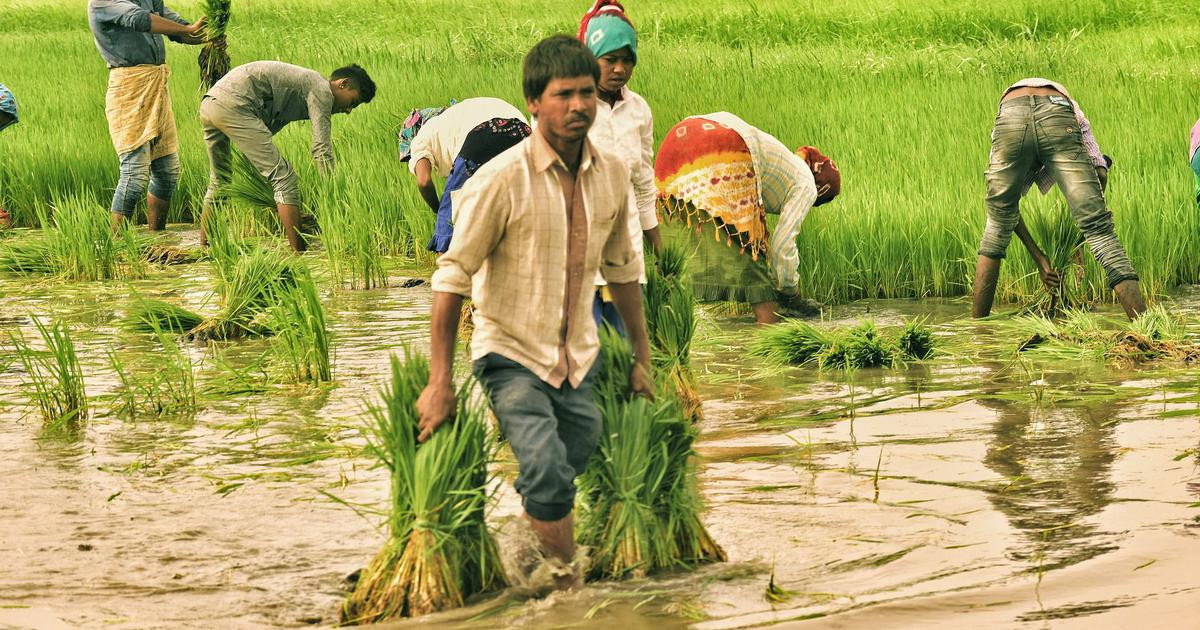More rice breeds suitable for Nigeria’s farming ecosystems are needed to increase the estimated national rice production figure of 7.7 million tonnes. Experts said additional rice breeds would help farmers to further increase their productivity and boost food security.
According to the Food and Agriculture Organisation(FAO), Nigeria’s yield per hectare for rice is two tonnes, whereas it is 3.4 for Ethiopia, 2.9 in South Africa and 4.2 in Kenya.
Though there are various breeds on the market, experts believe what Nigeria needs are varieties with shorter-lifespan variation, highly resilient against brown plant hoppers, flash floods and many rice diseases.
Deputy Chairman, All-Farmers Association of Nigeria (AFAN), Lagos Chapter, Mr. Shakin Agbayewa, said local price production could only meet 57 per cent of the 6.5 million metric tonnes of rice consumed annually in the country.

According to him, addressing the current food shortage crisis will require home-suited varieties capable of achieving 15 metric tonnes per hectare.
He said such new strain, if planted nationwide, would significantly boost overall rice production, contributing to safeguarding the country’s food security.
In 2022, National Cereals Research Institute (NCRI), Badeggi in Niger State, released two rice varieties TEGGOLD and 6444GOLD to farmers as part of efforts to bolster food security.
Each of the new varieties could give a yield of 10 tonnes per hectare as against the 5-6 tonnes per hectare of the old varieties.
Last year, the Federal Government released a new rice variety, known as FARO68. FARO68, according to the National Centre for Genetic Resources and Biotechnology (NACGRAB), was released based on early maturity and high grain yield.
This year, in collaboration with HarvestPlus Nigeria the Federal Ministry of Agriculture and Food Safety (FMAFS) introduced seven varieties of biofortified zinc rice.
Plant breeder Prof. Onuh Martin Onuh noted that introducing new varieties would help boost food security.
Onuh, who is the dean, Faculty of Agriculture, Imo State University, Owerri, stated: “ We always need new rice varieties to boost food security in the country. Things around man, including population, are continually evolving. Therefore, man will always need to equate the same evolutionary trend with new things so as to fit well into it. That is why man is always engaged in research and creating new diversities to enable his better survival in an ever-dynamic and unstable environment.”
Onuh and the faculty are committed to educating farmers on optimal farming techniques for each area, and improving the whole supply chain of rice production to increase output while minimising cost.
Also, Bill & Melinda Gates Foundation has been working with the Institute of Crop Science at the Chinese Academy of Agricultural Sciences (CAAS), to help Nigeria and the rest of West Africa strengthen their rice seed systems.
Working with CAAS, the foundation launched a project in 2021 to help West African countries breed rice and screen for high-yield varieties that are resistant to drought, salt, pests, and disease and are suited to local conditions.
The project also aims to build a local rice seed breeding, production, and extension systems, allowing local rice farmers to make more money by growing higher-yield, better-quality rice.
These initiatives will gradually enhance food self-sufficiency and lay the foundation for more food security in African countries.
CAAS has worked with two Chinese companies, using their bases in Nigeria and Mali to carry out related projects.
The project team works with Chinese and African breeding experts to breed new rice varieties, including customising the Green Super Rice (GSR) varieties that can produce high yields even under extreme climate conditions to suit local environments.
In Nigeria, the project grew two rice varieties at four demonstration sites during 2022’s dry season, registering on average 30per cent and 50 per cent higher yields, respectively, than the popular local varieties despite the huge challenges posed by COVID-19 and political volatility. Subsequent local production trials of both new varieties were also successful.
Meanwhile, a new research, conducted by researchers from the University of Nebraska–Lincoln, Huazhong Agricultural University, Africa Rice Center, and Wageningen University and Research, indicated that current average rice yield in Africa is very low in relation to other parts of the world, indicating a substantial opportunity to enhance African rice production.
“Currently, domestic rice production in Africa meets about 60 per cent of the continent’s demand. That import dependence places Africa in a vulnerable position. Without a substantial increase in rice yields, meeting future rice demand will require more rice imports, as well as conversion of wildlife habitat to agricultural use.
“Africa’s heavy reliance on imports not only poses a significant threat to food security, but also leaves the continent susceptible to external supply and price shocks, as has happened recently when India imposed bans on rice exports,” said Martin van Ittersum, a professor of agronomy at Wageningen University.
Africa’s rice imports represent about a third of the rice traded on the global market, said Shen Yuan, a professor of agronomy at Huazhong Agricultural University and lead author of the article.
Boosting African rice yields as outlined in the study can go far in “meeting the future rice demand of 150 million tons by 2050 without increases in current rice exports while reducing the pressure to convert land for rice cultivation,” said Shaobing Peng, a professor of agronomy at Huazhong Agricultural University.
Source: The Nation Online NG





